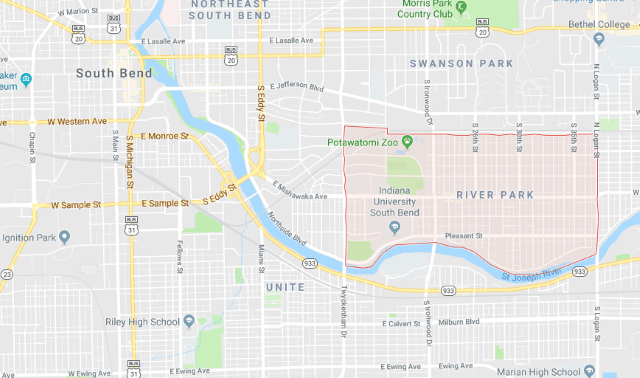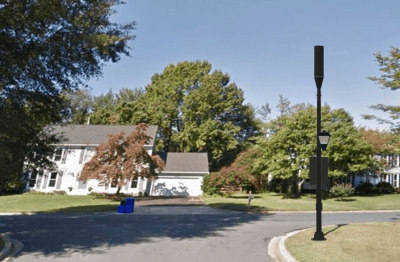 AT&T is continuing its 5G wireless trials in several cities around the country, attempting to determine if there is a business case for wireless home broadband offering speeds up to a gigabit on a shared, next-generation wireless network. While some trial participants are getting blazing fast speeds, some may be out of luck if their homeowner association or apartment owner bans outdoor antenna equipment from being attached to the side of buildings for aesthetic reasons.
AT&T is continuing its 5G wireless trials in several cities around the country, attempting to determine if there is a business case for wireless home broadband offering speeds up to a gigabit on a shared, next-generation wireless network. While some trial participants are getting blazing fast speeds, some may be out of luck if their homeowner association or apartment owner bans outdoor antenna equipment from being attached to the side of buildings for aesthetic reasons.
More than a year ago, AT&T launched an enterprise 5G trial in Austin to learn more about millimeter wave spectrum and how it could be used to deliver very high-speed fixed wireless internet access. In late 2017, AT&T expanded 5G trials to Waco, Tex., Kalamazoo, Mich., and South Bend, Ind., to test whether the service would work in residential and suburban neighborhoods where tree-lined streets and yards could theoretically block the extremely high and very line-of-sight frequencies AT&T’s 5G service uses.
“My team spent countless hours collecting data and talking to real people who elected to join the trial,” wrote Melissa Arnoldi, president, technology and operations for AT&T, in a blog post. “What worked? What didn’t? What did we need to change? Why was this happening here and not there? Would mmWave spectrum really work to deliver 5G? Did we really just hit that speed in South Bend?”

Part of AT&T’s 5G wireless service trial is taking place in the River Park neighborhood of South Bend, Ind.
What AT&T also learned is to talk about the successes and keep the failures to themselves. In a more recent blog post, Arnoldi shared how the Rubbelke family is benefiting from AT&T’s 5G wireless service at their home in the River Park neighborhood, just to the southeast of downtown South Bend:
Well, for one – it’s providing them with ultra-fast wireless speeds. Just how fast? At the Rubbelke household, they’re seeing peak wireless speeds nearing 1 Gbps and latency rates less than 20 milliseconds.
Using this emerging technology, Rebecca can easily stream their 3-year-old daughters’ favorite TV show on the tablet. Her husband, Michael, can download textbooks and research materials in an instant for his graduate program. And they can connect with family over video chat without noticeable buffering.
And they can use all of these bandwidth-heavy applications simultaneously and seamlessly—something that would be nearly impossible with current LTE technologies.
Arnoldi’s summary of AT&T’s experiences with 5G are all positive, all the time:
Waco, Texas
Participants: Small and mid-sized businesses
- Provided 5G mmWave service to a retail location more than 150 meters away from the cell site and observed wireless speeds of approximately 1.2 Gbps in a 400 MHz channel.
- Observed latency rates at 9-12 milliseconds.
- Latency impacts things like the time between pressing play and seeing a video start to stream or hitting a web link and seeing a webpage begin to load. For context, MIT researchers discovered the human brain “latency” is 13 milliseconds.
- Supported hundreds of simultaneous connected users using the 5G network.
Kalamazoo, Michigan
Participants: Small businesses
- Observed no impacts on 5G mmWave signal performance due to rain, snow or other weather events.
- Learned mmWave signals can penetrate materials such as significant foliage, glass and even walls better than initially anticipated.
- Observed more than 1 Gbps speeds under line of sight conditions up to 900 feet. That’s equal to the length of 3 football fields.
South Bend, Indiana
Participants: Small business and residential customers
- Observed a full end-to-end 5G network architecture, including the 5G radio system and core, demonstrating extremely low latency.
- Successfully provided gigabit wireless speeds on mmWave spectrum in both line of sight and some non-line of sight conditions.
But it isn’t all great news.
Line of Sight vs. Zoning and HOA Restrictions
AT&T’s millimeter wave trials are taking place in the 28 and 39 GHz bands that are way above even the 5 GHz Wi-Fi your home router may be equipped with. Anyone who has compared the older 2.4 GHz Wi-Fi band with the newer, but less congested 5 GHz band knows that while 5 GHz can deliver faster speeds with less interference, it is also more distance sensitive than the lower frequency alternative. The more obstacles between your Wi-Fi enabled router and your wireless device, the poorer the results.

A simulated small cell antenna as part of a light pole. (Image courtesy of Crown Castle)
AT&T claims its beta tests are showing “better than expected” results from its 5G service in both line of sight and non-line of sight conditions, but won’t say how much speeds are affected in more marginal reception conditions. AT&T’s 5G antennas are located outdoors, which should offer a clearer path between the transmitter and the receiver, and AT&T claims the signal “performs well” despite foliage and buildings blocking the line of sight between the antenna and a subscriber’s home.
But AT&T itself must not be totally satisfied with the results, because the company told Ars Technica it has begun testing adaptive beamforming and beam tracking to “enable non-line-of-sight 5G services in our trials.” ‘Enable’ in this context suggests that without these adaptive technology add-ons to overcome foliage and building blockages, 5G service did not work well.
Other blockages, those AT&T cannot outwit with technology, are zoning controversies over small cell antennas and homeowner association agreements that restrict outdoor antennas, even though fixed wireless antennas are protected by a FCC ruling allowing them. Despite the fact these antennas are small and unobtrusive — usually installed on an exterior wall near the roof-line — some requests have created controversy in neighborhoods for aesthetic or dubious health and safety concerns.
Even more controversial are the small cell antennas that must be installed inside neighborhoods within 200-800 feet of customers. Some local authorities and homeowner associations may object less to the antenna than to its power supply and battery backup equipment, usually housed inside large-sized metal cabinets placed nearby on the ground or on the pole itself.
In South Bend, AT&T Fiber is on the way in many parts of the city, offering wired gigabit speed service without the limitations of marginal signal reception or fussy HOA agreements and paranoid neighbors. That fact has not been lost on AT&T’s executive management, who remain uncertain about the business case of offering fixed 5G wireless home broadband in areas that will also be served by AT&T Fiber, the company’s fiber to the home service.
In the case of South Bend, AT&T’s trial is taking place in a relatively dense city neighborhood that would normally be a prime target for AT&T Fiber. The cost to provision fiber to the home service in areas already wired for AT&T Fiber may prove a better value for AT&T than contemplating the cost of installing nearly 60 small cells to serve each square mile of South Bend.


 Subscribe
Subscribe